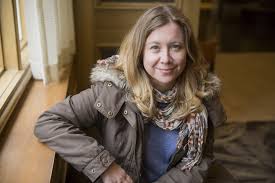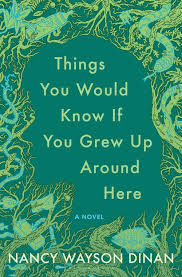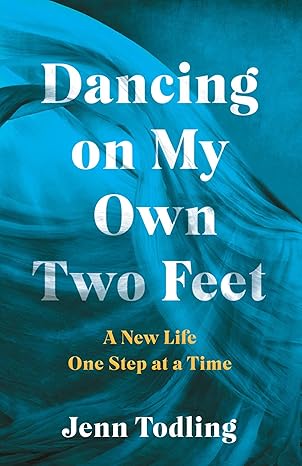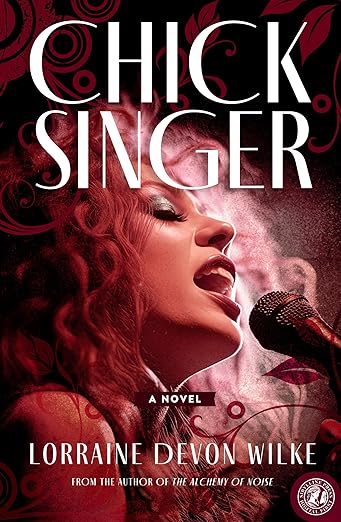The Gap Between Intention and Execution
 The book I intended to write was not the book I ended up writing. Oh, there are some similarities: I wanted to write a book about how we cannot truly process the environmental catastrophe that we are currently experiencing. I knew that I wanted the earth to send signals about this environmental catastrophe to my protagonist, and for her to almost – but not quite – understand. But alongside these similarities are also some major differences – for example, the draft with which I queried my agent featured an antagonist named Ricky, a man attracted to the anarchy that exists in the aftermath of a natural disaster. Ricky, along with other characters and plot beats, never made it to the finished project.
The book I intended to write was not the book I ended up writing. Oh, there are some similarities: I wanted to write a book about how we cannot truly process the environmental catastrophe that we are currently experiencing. I knew that I wanted the earth to send signals about this environmental catastrophe to my protagonist, and for her to almost – but not quite – understand. But alongside these similarities are also some major differences – for example, the draft with which I queried my agent featured an antagonist named Ricky, a man attracted to the anarchy that exists in the aftermath of a natural disaster. Ricky, along with other characters and plot beats, never made it to the finished project.
When I began writing the novel THINGS YOU WOULD KNOW IF YOU GREW UP AROUND HERE, I wanted a road map of where the novel – and I as its writer – would go. I had an idea of where I would begin, and I had an idea of where I would end, and so, to bridge that gap in the middle, I wrote an outline. But in the process of writing, sticking to that outline became difficult – as the characters developed, it felt as if I were marching these people through plot points, as if you could see the author and her scaffolding and not the characters themselves.
I have heard a lot of conversations about plotting versus pantsing (writing a book without a plan, or “by the seat of your pants”). I have tried both ways, and I have come to believe that, for me, the ideal method of developing a novel is somewhere in the middle. Plotting gets you started – you map out major conflicts and you have a destination – but, for me and for this book, sticking to the plot made every action feel wooden and false. I have to have some sort of destination, but I also have to leave space for the discoveries made along the road.
In her book Bird by Bird, Anne Lamott quotes E.L. Doctorow’s advice for writing a novel. Doctorow argues that writing a novel is like driving home in the dark: with your headlights on, you can only see a few feet in front of you, but the light is enough to get you home. So much of writing for me is tricking myself into the work – how do I keep going when the work gets hard, as it inevitably does? If having that destination helps me move forward in the moments where I am stuck – lighting a bit of the dark way for me – then I find that having an outline of a plot is helpful.
But there are also points when I dread the work and the blank page, and I can’t figure out what happens next. I have discovered that often when this happens, I have made a misstep, taking a wrong turn in the dark night. I have forced my characters into situations in which neither they nor I can figure out what they are supposed to say or do. Every step feels false, and I have to trace the story back to the last real moment and reassess – where do we go from here? Where has my plot outline failed me?
In THINGS YOU WOULD KNOW, I made it all the way to the end of drafting with Ricky the antagonist, but I struggled with the decisions that he made, and with the decisions he forced the protagonist to make. In revision, I thought a lot about how the journey would naturally unfold, and I spent a lot of time erasing the author scaffolding – erasing the plot that I had carefully built.
The story needed this erasure – it wasn’t working as it stood. The book was not what I wanted it to be. But one of the things that I learned by forcing the plot all of the way to the end is that the book is also not quite what it wanted to be. There were decisions made along the road that changed the final destination.
When I teach how to workshop in a creative writing class, one of the first things I teach is the importance of the author’s and the story’s intention. As workshop participants, we should not make a suggestion for a story without first understanding what the story wants to be and to do.
I think about that instruction now, as THINGS YOU WOULD KNOW is out in the world, and I think about the two paths of that novel, and how they diverged in a yellow wood. As I work on revisions for a second novel, this lesson has stayed with me: when beginning a journey, a destination is important, but as a writer, I should be willing to embrace and explore the diversions along the way. I should listen to where the characters want to take me. I should pay attention when I am forcing the story to be something that it is not, and listen, instead, to what it is asking to become.
—
THINGS YOU WOULD KNOW IF YOU GREW UP AROUND HERE
 Set during the devastating Memorial Day floods in Texas, a surreal, empathetic novel for readers of Station Eleven and The Age of Miracles.
Set during the devastating Memorial Day floods in Texas, a surreal, empathetic novel for readers of Station Eleven and The Age of Miracles.
2015. 18-year-old Boyd Montgomery returns from her grandfather’s wedding to find her friend Isaac missing. Drought-ravaged central Texas has been newly inundated with rain, and flash floods across the state have begun to sweep away people, cars, and entire houses as every river breaks its banks.
In the midst of the rising waters, Boyd sets out across the ravaged back country. She is determined to rescue her missing friend, and she’s not alone in her quest: her neighbor, Carla, spots Boyd’s boot prints leading away from the safety of home and follows in her path. Hours later, her mother returns to find Boyd missing, and she, too, joins the search.
Boyd, Carla, and Lucy Maud know the land well. They’ve lived in central Texas for their entire lives. But they have no way of knowing the fissure the storm has opened along the back roads, no way of knowing what has been erased-and what has resurfaced. As they each travel through the newly unfamiliar landscape, they discover the ghosts of Texas past and present.
Haunting and timely, Things You Would Know if You Grew Up Around Here considers questions of history and empathy and brings a pre-apocalyptic landscape both foreign and familiar to shockingly vivid life.
——————————
Category: How To and Tips





























I like how you’ve described your process. Mine is similar, although to date I haven’t plotted until I have the bones of the entire story down. Then I go back and outline so I can identify the missing pieces. I also write chapters out of order depending on which characters feel like “talking” on any particular day.
I’ve just finished my 2nd novel, The Things We Do Not Speak Of, a southern family drama (women’s fiction) and am delighted to see another book with a longer-than-usual title. Now I begin beta readers, then more polishing. And agent queries.